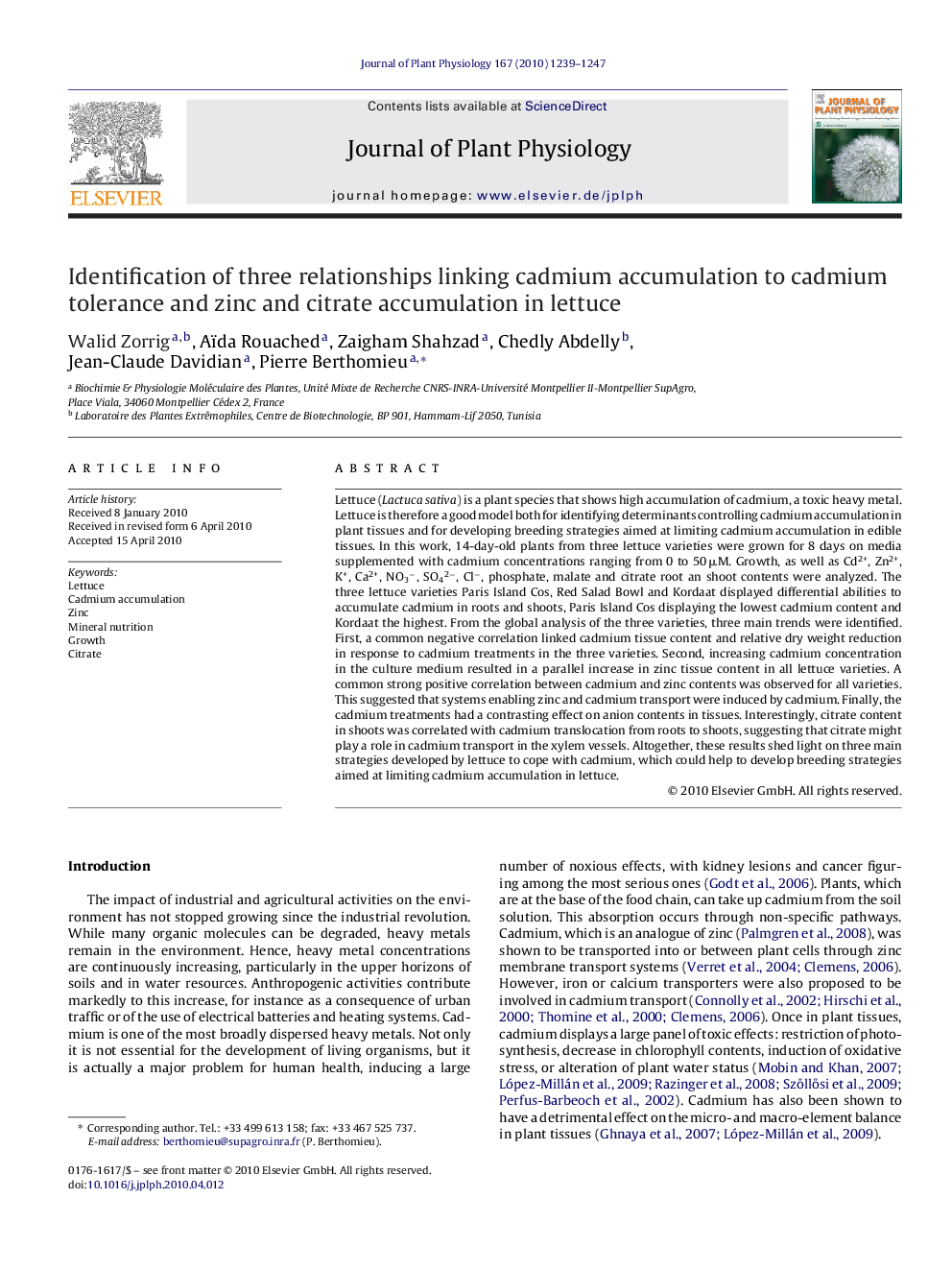| Article ID | Journal | Published Year | Pages | File Type |
|---|---|---|---|---|
| 2056758 | Journal of Plant Physiology | 2010 | 9 Pages |
Lettuce (Lactuca sativa) is a plant species that shows high accumulation of cadmium, a toxic heavy metal. Lettuce is therefore a good model both for identifying determinants controlling cadmium accumulation in plant tissues and for developing breeding strategies aimed at limiting cadmium accumulation in edible tissues. In this work, 14-day-old plants from three lettuce varieties were grown for 8 days on media supplemented with cadmium concentrations ranging from 0 to 50 μM. Growth, as well as Cd2+, Zn2+, K+, Ca2+, NO3−, SO42−, Cl−, phosphate, malate and citrate root an shoot contents were analyzed. The three lettuce varieties Paris Island Cos, Red Salad Bowl and Kordaat displayed differential abilities to accumulate cadmium in roots and shoots, Paris Island Cos displaying the lowest cadmium content and Kordaat the highest. From the global analysis of the three varieties, three main trends were identified. First, a common negative correlation linked cadmium tissue content and relative dry weight reduction in response to cadmium treatments in the three varieties. Second, increasing cadmium concentration in the culture medium resulted in a parallel increase in zinc tissue content in all lettuce varieties. A common strong positive correlation between cadmium and zinc contents was observed for all varieties. This suggested that systems enabling zinc and cadmium transport were induced by cadmium. Finally, the cadmium treatments had a contrasting effect on anion contents in tissues. Interestingly, citrate content in shoots was correlated with cadmium translocation from roots to shoots, suggesting that citrate might play a role in cadmium transport in the xylem vessels. Altogether, these results shed light on three main strategies developed by lettuce to cope with cadmium, which could help to develop breeding strategies aimed at limiting cadmium accumulation in lettuce.
